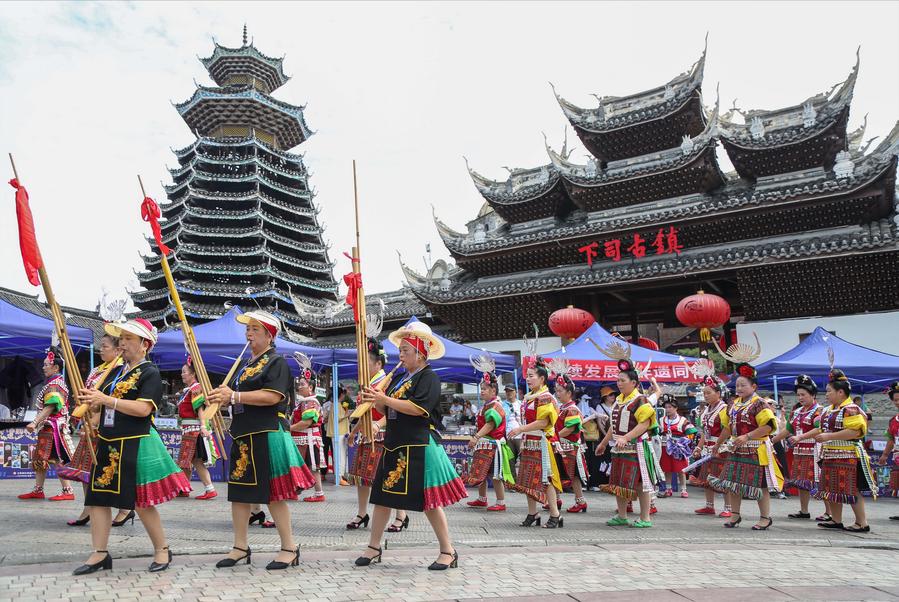
Lessons on the Jealous Protection and Preservation of Cultural Heritage » Capital News
Last week, China’s top procuratorate released studies of eight typical cases on Saturday to assist prosecutors nationwide in managing related public litigations, with the goal of further protecting the nation’s cultural heritage.
According to the Supreme People’s Procuratorate (SPP), typical criminal crimes, including destroying and occupying cultural relics—historical structures, revolutionary landmarks, and old cultural relics—were committed in these incidents.
One noteworthy instance involved prosecutors in Jiangsu Province, east China, who filed an administrative public lawsuit against a township administration in 2023. This action was taken because the local administration disregarded recommendations made by the prosecutors to protect the grave of a well-known writer from the 16th century.
According to the SPP, procuratorates around the country have processed more than 17,000 public litigation matters pertaining to the preservation of cultural heritage since October 2019.
China has a comprehensive policy framework for the protection and preservation of cultural heritage, which includes tangible and intangible cultural assets. China has laws and regulations at both the national and provincial levels governing cultural heritage protection. The main legislation includes the Law of the People’s Republic of China on the Protection of Cultural Relics and the Law on the Protection of Intangible Cultural Heritage.
The State Administration of Cultural Heritage (SACH) is the main governmental body responsible for overseeing cultural heritage protection efforts at the national level. It coordinates with local governments and other relevant organizations to implement heritage protection policies.
China maintains comprehensive inventories of cultural relics and intangible cultural heritage items. These inventories help in identification, documentation, and preservation efforts. China invests significant resources in the conservation and restoration of cultural relics and heritage sites. This includes efforts to repair and maintain ancient buildings, archaeological sites, artifacts, and artworks.
China promotes public awareness of cultural heritage through education, outreach programs, and cultural events. Efforts are made to engage communities in heritage conservation and transmit traditional knowledge and skills to younger generations.
China collaborates with international organizations, foreign governments, and experts in cultural heritage protection. This includes participating in UNESCO conventions and initiatives for the safeguarding of cultural heritage.
China places particular emphasis on the protection of intangible cultural heritage, such as traditional performing arts, crafts, rituals, and knowledge systems. It actively nominates elements for inclusion on UNESCO’s Representative List of the Intangible Cultural Heritage of Humanity.
Overall, China’s policy on cultural heritage protection reflects its commitment to preserving its rich cultural legacy for future generations and promoting cultural diversity both domestically and internationally.
China’s cultural heritage is vast and diverse, reflecting its long history, rich traditions, and diverse ethnic groups. China is one of the world’s oldest civilizations, with a history dating back over 5,000 years. Ancient Chinese civilization flourished along the Yellow River and Yangtze River valleys, giving rise to advanced technologies, philosophical systems (such as Confucianism and Taoism), and cultural achievements.
Chinese literature and arts have a long and distinguished history. Classical Chinese poetry, calligraphy, painting, and pottery are highly regarded for their beauty and craftsmanship. Chinese opera, traditional music, dance, and martial arts are also integral parts of the country’s cultural heritage.
Chinese cuisine is renowned worldwide for its diversity, flavors, and regional variations. Each of China’s provinces has its own culinary traditions, ingredients, and cooking techniques. Chinese cuisine emphasizes balance, freshness, and harmony of flavors.
The Chinese writing system, based on characters, is one of the oldest and most complex writing systems in the world. The Chinese language has numerous dialects and regional variations, with Mandarin being the official language.
China boasts a wealth of architectural marvels and heritage sites, including the Great Wall of China, the Forbidden City, the Terracotta Army, the Mogao Caves, and numerous temples, palaces, and historic towns. These sites showcase China’s architectural ingenuity, craftsmanship, and cultural significance.
China celebrates a wide range of traditional festivals and cultural events throughout the year, such as Chinese New Year, the Mid-Autumn Festival, Dragon Boat Festival, and Lantern Festival. These festivals are characterized by colorful celebrations, rituals, and customs that have been passed down for generations.
China has a rich intangible cultural heritage, including traditional performing arts, crafts, rituals, and oral traditions. UNESCO has recognized numerous Chinese elements on its Representative List of the Intangible Cultural Heritage of Humanity, such as Peking opera, traditional Chinese medicine, and the Dragon Boat Festival.
Overall, China’s cultural heritage is a source of pride and identity for its people and continues to shape the country’s identity and influence its modern society and global perceptions.
